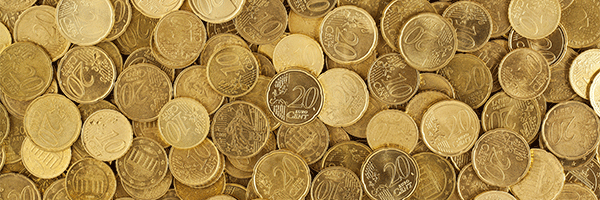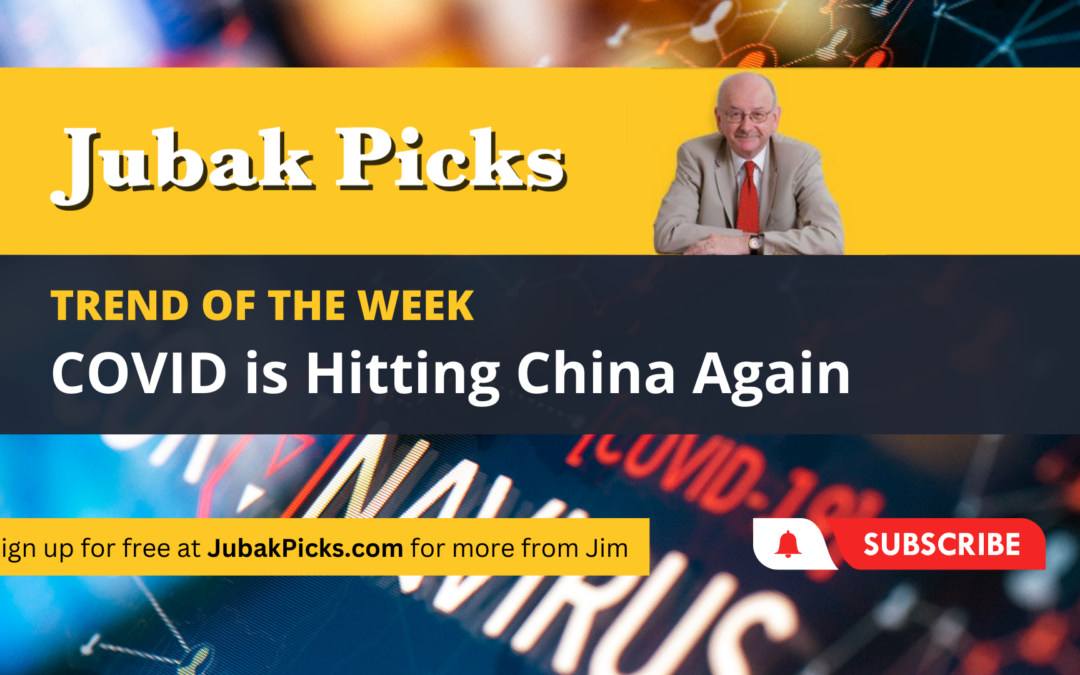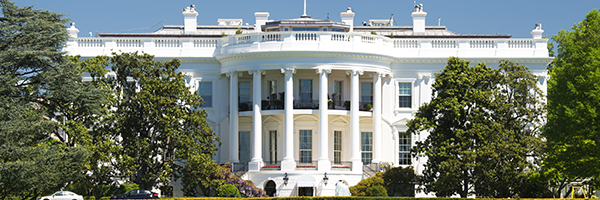 April 10, 2025
April 10, 2025
What You Need to Know Today:
Hooey’s on first in initial “insight” from new Treasury Secretary Bessent
On Wednesdatmay, February 5, newly minted Treasury Secretary Scott Bessent said the Trump administration’s focus with regard to bringing down borrowing costs is 10-year Treasury yields, rather than the Federal Reserve’s benchmark short-term interest rate.

Please watch my YouTube video: Quick Pick Goldman Sachs
Today’s Quick Pick is Goldman Sachs (GS). This is not a cheap stock. Goldman has had a good run in 2024 and is up 55% year to date. But this is the stock to use play the financial deregulation policies of the Trump administration. We’re moving from Biden’s administration that had a relatively high degree of scrutiny in merger and acquisition deals to an administration that will come close to approving any deal Wall Street proposes. The deal pipeline is full. Companies that were waiting on the election results to move deals forward will start the process as soon as the new President is inaugurated. Running an M&A deal is incredibly lucrative for an investment bank. Goldman Sachs is a big player in this market and will benefit from doing M&As and LBOs. This pick is how I’ll be playing the Trump financial deregulation and I’ll be adding it to my Jubak Picks portfolio tomorrow.

Gold is up today on Ukraine worries, but the trend points up for all of 2025
Gold will rally to a record next year on central-bank buying and U.S. interest rate cuts, according to Goldman Sachs. The investment bank listed the metal among top commodity trades for 2025. “Go for gold,” analysts said in a note, reiterating a target of $3,000 an ounce by December 2025.

As the Cop29 climate meeting talks, the world blows through another global heating benchmark
The internationally agreed goal to keep the world’s temperature rise below 1.5C is now “deader than a doornail.” Climate scientists say that 2024 is almost certain to be the first individual year above this threshold.Three of the five leading research groups monitoring global temperatures consider 2024 on track to be at least 1.5C (2.7F) hotter than pre-industrial times. That would make 2024 the hottest year on record, beating the 2023 record. The past 10 consecutive years have already been the hottest 10 years ever recorded. This hasn’t stopped world leaders gathered in Baku from talking about how to achieve this goal.

With stocks looking stalled, Nvidia reports after the close on Wednesday
NVIDIA (NVDA) will release its third quarter results after the market closes on Wednesday. Analysts are forecasting over 80% year over year growth in both revenue and EPS. Several Wall Street firms have raised their price targets on Nvidia ahead of its earnings report, citing strong demand for AI chips and the potential for upside surprises. Analysts from HSBC, Oppenheimer, Susquehanna, Wedbush, Raymond James, and Mizuho have increased their price targets, with HSBC setting the highest at $200. The stock closed at $140.15 on Monday, November 18. On the other hand…

Saturday Night Quarterback says (on a Sunday), For the week ahead expect…
The indicator known as earnings-revision momentum— the ratio of upward versus downward revisions to analysis forecast per-share earnings over the next 12 months for the Standard & Poor’s 500 stocks—-has slumped into negative territory and is hovering near its second-worst reading in the past year, according to Bloomberg.

I’ve added the last 2 steps to my Special Report “8 Steps to Protect Against the Global Debt Bomb”
This morning I added Step #7 and Step #8 to my Special Report on how to protect your portfolio agains the coming global debt bomb. And I promised Step #9 on what to sell in the technology sector by the end of this week.
Live Market Report (20 minute delay)

Palo Alto Networks pops–and Why?
Shares of Palo Alto Networks (PANW) rose by 5.59% in after-hours trading on Friday. The reason? News that the stock will be added to the Standard & Poor’s 500 index before the market open on June 20. Managers of portfolios that follow the index have to buy shares of Palo Alto to keep up with the change. The move to membership in the index increases ownership of the shares just as the stock is exhibiting extraordinary upward momentum. Shares of the cyber-security company are up 55.68% for 2023 to date as of the close on Friday, June 2, and up 22.81% in the last month. That performance rests on a record of high sustained growth. It’s the “sustained” part that I think the market finds so valuable right now.

So why did stocks pop on the huge surprise in May jobs report?
The U.S. economy added a monster 339,000 jobs in May. Economists had been looking for 180,000 to 190,000 jobs. On the news, stocks rallied. Strongly. The Standard & Poor’s 500 closed up 1.45%. The Dow Jones Industrial Average ended the day 2.12% higher. The NASDAQ Composite added 1.07% and the NASDAQ 100 finished up 0.73%. The small-cap Russell 2000 moved higher by 3.56%. So why did stocks move up?

10 Stocks for the AI Gold Rush–and WHY these picks
Artificial intelligence really is a paradigm-breaking, transformative technology. Right now, investors are so enthusiastic about the sector, especially the obvious leader Nvidia (NVDA), that we’re looking at a potential bubble that will collapse with much gnashing of teeth and I-told-you-so “wisdom” casting doubt on the reality of the entire endeavor. I think a bubble is indeed possible. Nvidia did trade at a trailing twelve-month price-to-earnings ratio of 196 on May 31, after all. But I think you do want to own the sector now–because the breaking of the bubble, if it does break is, in my opinion, two quarters or more away. And you want to own the sector for the long run–say, 10 years or more–because it is such a game changer for so much of the economy. But what to own? I’ve put together a list of the 10 stocks that I think are the best way to participate in the AI gold rush.

Today the financial markets believe that the Fed is saying “Skip” an interest rate increase on June 14–how this is different from a “pause”?
What’s the difference between a “skip” and a “pause.”
That’s the question the Federal Reserve has posed to the financial markets today. Fed Governor and Vice-chair nominee Philip Jefferson said today that any decision to hold rates steady should not be viewed as the end of the tightening cycle. Coming just two days before the beginning of the Fed’s pre-meeting quiet period, Jefferson’s comments are being seen by the market as a preview of the Fed’s action at its June 14 meeting.

China’s economy continues to slow–and the problems don’t look temporary–so I’m selling my China ETF out of my Perfect 5 ETF Portfolio
The hits just keep on coming. On Wednesday, the release of May numbers on factory activity provided the most recent bit of bad news. China’s official manufacturing Purchasing Managers’ Index dropped to 48.8 this month, down from 49.2 in April, according to data released by the National Bureau of Statistics on Wednesday. It was the second straight contraction. In this index, a reading above 50 indicates expansion, while anything below that level shows contraction. The index, which mainly covers larger businesses and state-owned companies, is at its lowest level since December. In that month China ended most of its pandemic restrictions early that month. That led to hopes of a big economic rebound. And a strong stock market rally.
Now those hopes look premature or just plain exaggerated.

More job openings than expected leads to worry over Friday’s jobs report for May
The latest Job Opening and Labor Turnover Survey, or JOLTs report, released yesterday, May 30, Tuesday, showed 10.1 million job openings at the end of April. That was an increase from the 9.8 million in job openings reported in March. Economists surveyed by Bloomberg had expected 9.4 million openings in April. This higher-than-expected number has, this morning, led to fears that the labor market is still stronger than the Federal Reserve would like. Which could lead to a Friday report of a stronger-than-expected jobs report for May. And a Federal Reserve interest rate increase at the central bank’s June 14 meeting.

Please Watch My New YouTube Video: Quick Pick Short China ETF FXI
Today’s Quick Pick is Short iShares China Large-Cap ETF (FXI) COVID is back in China with a new peak of an estimated 65 million cases a week. It’s not as bad as the last peak which saw 35 million cases a day, but it’s enough that the economy will take a hit. And China’s reopening recovery was already looking a bit shaky. During the last wave of COVID, the iShares China Large-Cap ETF (FXI) fell to $20.95. The ETF rose steadily from that low on optimism over China opening back up. The economy didn’t bounce back as quickly as expected and FXI has stayed in the $27-$28 range recently. My suggestion is to buy an August Put Option. That will leave enough time for the COVID wave to play out. The August 18 Put with a strike price of 27, trades at just $1.00 or $100 for a contract of 100 shares of the ETF. That price makes this an affordable volatility play on a macroeconomic trend, and I’ll be adding this to my Volatility Portfolio portfolio on my paid site, JubakAM.com, and selling this ETF out of my Perfect 5 ETF Portfolio.

Please Watch My New YouTube Video: COVID Is Hitting China Again
This week’s Trend of the Week video is COVID is Hitting China Again. China is seeing another wave of COVID. We can expect this wave to peak at the end of June with around 65 million cases a week. While that’s a huge number, the previous wave saw 35 million cases a day. So, yes, this is a smaller wave, but it certainly won’t help China’s economy, which is struggling to get back to a 5% growth rate. The country is also dealing with a youth unemployment crisis where the recent graduate unemployment rate is around 25%. This wave of COVID isn’t likely to shut down the entire country–if only because China’s leadership isn’t about to go back to the prior policy of widespread closures of factories and entire neighborhoods–but it is likely that some people will be less inclined go out, mandate or not, and they may self-impose their own lockdown until the wave subsides. This is all likely to take a bite out of the growth rate which was edging back toward 5%. As stocks stagnate and a recovery rally in China looks to be coming to an early end, I’ll be posting about shorting China ETFs on my paid site, JubakAM.com.

Special Report: Finding the Next Nvidia–my 10 Picks. Pick #1 Luminar
Pick #1 for my Special Report Finding the Next Nvidia: Luminar Technologies (LAZR). Could Luminar be the next Nvidia? Yes, if the Lidar market develops in the right way. Certainly, so far, the company is doing everything internal right.

Now can Biden and McCarthy (especially McCarthy) get their debt ceiling deal through Congress-here’s the next test
President Joe Biden and House Speaker Kevin McCarthy agreed on a deal that would raise the debt ceiling and avert a default by the U.S. government. If they can get it through Congress where a core of ultra-conservative Republican House members is very unhappy that McCarthy didn’t extract more concessions from the White House. The first test for the deal is the House Rules Committee.

Saturday Night Quarterback says, For the week ahead expect…
You’re entitled to feel a bit (or more) of debt ceiling fatigue. For a change of pace, look to Friday, June 2, when the Bureau of Labor Statistics releases its jobs report for May. Economists project that the U.S. economy added fewer than 200,000 jobs in May. That would be a big dip from the average monthly gain of about 370,000 over the last year. Average hourly earnings are forecast to have increased by 0.3% in May from April.

Even with a debt ceiling deal emerging from talks, the roller coaster ride isn’t over–here’s my timetable for the last bit of the ride
If negotiators reach a deal on resolving the debt ceiling crisis that only begins a process fraught with nailing-biting delays built into the legislative process. And opposition to the deal from progressive Democrats and ultra-conservative Republicans. Today, the stock market finished strongly higher on hopes that a deal that avoids a U.S. debt default is within reach. And on continued hyper-enthusiasm about anything vaguely touched by artificial intelligence. Next week, isn’t likely to show a smooth continuation of the upward trend. I’d expect headlines about disappointment with the deal and on the possibility that there aren’t enough centrist Democratic and Republican votes to pass the deal. I expect the deal to pass, eventually, but that doesn’t mean the market won’t chew its fingernails with worry on any particular day.

PCE inflation in April above expectations; interest rate increase for June 14 rise
The personal consumption expenditures price index, the Fed’s preferred inflation gauge, rose a faster-than-expected 0.4% in April, the Commerce Department reported this morning, May 26. Core PCE inflation also rose by 0.4% in April. “This is the wrong direction for the Fed,” Diane Swonk, chief economist at KPMG, told Bloomberg. “June will depend on getting outside of debt ceiling issues but a July hike is now in play.”

Today, a glimmer of hope for a debt ceiling deal
They’re still talking. Which is good. It looks like there might be a deal. Which is good. It would be based on kicking all the tough line item decisions on what programs to cut down the road to the August and September budget and appropriations process in Congress.

Deja Vue all over again–Fitch Ratings puts U.S. debt on “rating watch negative”
In 2011 in an earlier debt ceiling battle, S&P Global Ratings downgraded the U.S. credit rating from AAA on the risk that the United States would default on its debt. Yesterday, May 24, Fitch Ratings moved the United States to “rating watch negative” on the risk that Congress would fail to act in time to prevent a U.S. default on the country’s government debt.

Here are today’s 3 most important financial market numbers to figure out where we’re headed in the short term
Three numbers caught my eye today as indications of where the financial markets are headed in the short term. I’m looking at the moves in the Russell 2000 small-cap index. In the CBOE S&P 500 Volatility Index ( VIX). And in the odds on interest rate increases from the Federal Reserve on the CME FedWatch tool.

If the tech economy is slowing, somebody forgot to tell Nvidia–stock surges 20% in after-hours on earnings, revenue, guidance beats
Nvidia (NVDA) shares were up 19.68% at 4:45 p.m. New York time today, May 24, after the company reported beating analyst estimates on earnings and revenue. The company also told analysts to expect second-quarter revenue way, way above pre-announcement projections. For the three-month period ending April 30, Nvidia earned $1.09 per share, excluding one-time items, as revenue came in at $7.19 billion. Analysts were looking for the company to report earnings of 92 cents a share and $6.28 billion in revenue.

The debt ceiling crisis gets a new player: the Federal Reserve (maybe)
Minutes from the Federal Reserve’s May 3 meeting show that some Fed officials want the central bank to be ready to step in if inaction in Washington produces a big drop in the financial markets. Chair Jerome Powell has in public repeatedly said that “no one should assume that the Fed can protect the economy” if the Treasury can’t make good on all federal obligations. But that doesn’t mean, the minutes suggest, that the Fed will do nothing.

So how much damage is this debt ceiling fracas going to do to the economy? A deal could still cost the economy 570,000 jobs
We all know that a continued standoff on the debt ceiling would be bad for the U.S. economy and financial markets. But even a deal along current lines is going to cost jobs–lots of jobs–and take a bite out of economic growth, according to Bloomberg Economics Spending cuts expected in an eventual deal to raise the U.S. debt limit could cost the country as many as 570,000 jobs and make the recession projected by Bloomberg Economics even worse.

Everybody is busy drawing red lines in the debt ceiling talks–and they keep moving
This reporting from the Washington Post this morning makes me very pessimistic about any debt ceiling deal until after the first checks DON’T go out on June 1 or whenever. “During a closed meeting Tuesday morning at a GOP hangout a block from the U.S. Capitol,” the Post reported “House Speaker Kevin McCarthy (R-Calif.) made a pointed plea: Do not break ranks over the debt ceiling crisis. Ahead of another round of negotiations with the White House, McCarthy told Republicans they had the upper hand in the discussions and encouraged his members to show their support for colleagues facing tough reelection bids next year as a sign of unity, according to two people in attendance, who spoke on the condition of anonymity to describe the private talk. McCarthy urged members to make sure vulnerable lawmakers would have plenty of campaign money from GOP coffers — even pledging that they would not be outraised by their opponents in the 2024 election cycle.”



